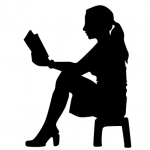From the Book Jacket…
Johnny Cotter first met Charlie Milner when they were both children, attending Freeport Kindergarten. It was there that their friendship formed, and it was at Charlie’s house, in his backyard, and up in his treehouse, where the boys grew closer. But as childhood gives way to adolescence, Charlie finds himself the victim of a bullying campaign so severe that his whole world grows dark, and Johnny finds himself fearing for his friend’s safety, his sanity, and his soul. It is at Freeport High School that Charlie’s rage and sadness finally boil over, when he seeks revenge on his jock tormentors. And it is at Freeport High where Johnny has to make a decision, a choice that could cost him his life and the life of his best friend.
 ***** 5/5
***** 5/5
TITLE: UP IN THE TREEHOUSE
AUTHOR: JOSEPH HIRSCH
PUBLISHED: 4-SEPTEMBER-2016
PUBLISHER: A PAGE IN TIME
GENRE: LITERARY
AMAZON: UP IN THE TREEHOUSE
WEBSITE: JOSEPH HIRSCH
WHEN A KINDERGARTEN teacher assigns Charlie Milner as Johnny Cotter’s classroom buddy, the two lads form a lifelong friendship. With the help of Charlie’s older brother and father, the kids build a treehouse that becomes their private sanctuary. As puberty thrusts them into the confusion of sexuality and insecurity, Charlie suffers brutal psychological and physical abuse at the hands of bullies. High school becomes unbearable for Charlie, which alters the course of Johnny’s life as he struggles to reconcile his desire for peer acceptance with loyalty to his best friend.
Hirsch weaves Janet Milner’s depression into the first half of the storyline in a subtle way. By the midpoint, her oddities are sufficient that even Johnny senses something is wrong with his friend’s mother. The haunted expression tinged with terror that Johnny witnesses but doesn’t understand illustrates the unintentional neglect that Charlie suffers at home. Isolated by his family and bullied by his peers, Charlie’s psyche erodes until rage overcomes fear. Powerless to stop his friend’s recklessness, Johnny must make a life altering decision.
Janet Milner’s gaze would fasten just to the side of Johnny’s shoulder whenever he tried to make eye contact with her. It was as if she was perpetually witnessing a terrifying car accident going on directly behind him.
Hirsch’s talent at using descriptive narrative as a literary device to create indirect symbolism stands with some of the best literary minds of our times. In addition to being able to transport the reader to his settings, Hirsch possesses a gift for developing multi-dimensional characters.
The creek that runs alongside the treehouse is an excellent example of Hirsch’s skill at integrating the settings into the plot. As the boys grow into adolescence and Charlie’s troubles escalate, the creek becomes increasingly polluted. This strategy symbolises Charlie’s psychological defence against the threat of fragmentation and illustrates his mental shift from victim to aggressor.
It had always been malodorous, but it was now even more fetid than he remembered it. The usual sulfurous smell commingled with a putrid musk of decay that made him gag as he walked back toward the treehouse.
The writing throughout is strong, and Hirsch indirectly delineates the boys’ characters by emotionally showing individual challenges and unique coping mechanisms. Readers can commiserate with Charlie’s eventual fury and with Johnny’s moral ambiguity over being best friends with a bully magnet.
Johnny was sure that theater was pretty much all Charlie had left. If he lost that, then he lost everything. Johnny walked out into the sunshine that always hit him like a flickering aurora after being in the theatre for any length of time. Charlie was nowhere in sight.
Hirsch has out done himself with this honest and passionate depiction of a boy’s complex journey into manhood and the devastating effects of bullying. I highly recommend this book.
Click this blog link to read about why the subject of this novel impacted me.






